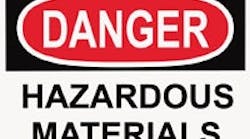RECOMMENDED DESIGN APPROACH
Figure 1. Trevor Kletz suggests a hierarchy of actions for adopting inherently safer technology. Adapted from: Trevor Kletz and Paul Amyotte,“Process Plants: A Handbook for Inherently Safer Design,” Table 11.4, pp. 274–275.
When a major accident occurs, the causes sometimes are difficult to establish and the keys to avoiding future incidents can be lost in the slow progress of lengthy, large-scale investigations. Last year, ProPublica, an independent non-profit newsroom that produces investigative journalism in the public interest, reported that OSHA, the EPA and the U.S. Chemical Safety Board (CSB) all were investigating the West accident. At the time, the CSB, which is an independent federal agency tasked with examining chemical accidents at industrial sites, also was still investing a 2010 oil refinery blast in northern Washington state that killed five and a 2010 oil rig explosion in the Gulf of Mexico that killed 11 [4]. (A variety of issues now afflict the CSB — see: “
Turmoil Takes a Toll on Chemical Safety Board.”) The preliminary CSB findings indicate that the fire and explosion at West Fertilizer were preventable. The causes were a combination of the company failing to take necessary steps to minimize the hazards and the inability of regulatory agencies to identify the problems and force corrective measures [5].Such investigations don’t prevent implementation of new or improved safety measures, but their duration contributes to a state of uncertainty for companies. Increased regulatory oversight, the very mechanism that might logically compel industry to adopt safer technologies today, can send companies running. While there’s widespread agreement on the need to enhance safety measures, a strong debate is raging within industry as to whether increased regulatory oversight is the best means through which to achieve this goal. Many companies actively oppose new requirements, while others move to areas where oversight is lax and compliance can be avoided.“While there is…a strong current within industry to adopt…safer technology as a best practice, many still oppose any actual regulatory requirements, arguing they are too costly and prescriptive. We can’t wait for corporations to volunteer, because the accidents continue, often with devastating consequences,” says Rafael Moure-Eraso, chair ofthe CSB [6].
A MORE EFFECTIVE PATHThe chemical industry has many reasons for concern about its blemished safety record. The possible costs of a major accident are enormous. Deaths, injuries and physical damage are the most serious consequences. However, the costs to a firm’s reputation, the threat of litigation, and the ability to operate unhindered in a compromised environment are significant long-term problems. Faced with this situation, many companies are seeking a more effective path to mitigate risk.One promising approach, essentially the antithesis of increased regulation, is for the chemical industry to voluntarily embrace enhanced safety principles. The CSB long has called for industry to adopt “inherently safer technology” (IST) and increasingly is urging regulators to require it. Championed by the late Trevor Kletz, a British expert who often has been called the “father of process safety” (see: “
Trevor Kletz Bequeaths Better Process Safety,”),IST strives to eliminate hazards by replacing dangerous chemicals with safer ones and simplifying processes to minimize complexity. Kletz suggests a hierarchy of actions (Figure 1). However, implementing these commonsense principles across widely different industrial operations is a huge challenge. The types of chemicals, processes and risk factors involved require careful evaluation if a genuine improvement is to be achieved. Safety standards, established by fire codes and testing certification, provide the objective basis for measuring whether a solution is truly “inherently safer.”The engineering profession has a vital role to play in advancing the goals of IST. Most chemical companies seek an accident-free environment and often are more likely to take the advice of a trusted consultant who can explain risks and how to manage them. Experienced engineering firms can help close safety gaps by addressing the two causes of most accidents—older equipment and improper training. Additionally, intelligent application of fire and safety codes in design can provide “ready built” best practices for operating companies.
CRUCIAL HELPEngineering firms can help chemical companies identify and address safety concerns in several important ways:1. A third-party assessment of aging facilities can avert a frequent cause of accidents. While the cause of the fire at West Fertilizer that sparked the explosion isn’t known, a faulty golf cart or an electrical system malfunction may be to blame. A relatively inexpensive facility assessment could have uncovered both. The evaluation certainly would have detected the failure to accurately document and safely store vast quantities of potentially explosive chemicals — and thus prompted steps that would have averted the disaster.2. From their experience in different kinds of plants across various industries, design professionals may know of up-to-date technology that provides cost-effective strategies or alternatives to reduce hazards. Storage facilities and piping with integral secondary containment reduce the risk of chemical spills. Detection systems have become more specialized and sensitive at spotting leaks. Properly designed automatic fire alarm and suppression systems can minimize damage from all but the worst conflagrations.3. Safety coordinators within engineering firms can develop customized safety programs and training modules. Proper training of employees is a first line of defense—in fact, fire safety is at least 90% education. For facilities with a fire code, regularly teaching employees about mandated safety procedures and how to recognize and respond to an emergency is critical. Doing so can save lives and avert accidents. For facilities like West Fertilizer, which are not covered by a fire code, employee training is essential. Often, larger companies have in-house personnel trained for chemical emergencies, though most volunteer fire departments lack the training. Well-trained employees can play a key role in averting accidents or minimizing their effects.4. Implementing a hazardous-materials management plan can effectively cut the rate and severity of accidents. Safer storage practices and less ammonium nitrate at West Fertilizer could have helped prevent disaster. Skilled engineering firms look at complex industrial operations with an eye to comprehensive risk assessment and reduction. Documenting the chemical inventory, storage conditions, emergency procedures and response personnel exemplify the sensible, cost-effective approach that inherently can improve the safety of many industrial facilities.
PETER WILMARTH, RA, is a Hillsboro, Oregon-basedcode analyst with SSOE Group. E-mail him at [email protected].
REFERENCES
1. “Texas Prohibits Nearly 70 Percent of Its Counties from Having a Fire Code,” Dallas Morning News, May 25, 2013.
2. “Why Has America Lost Interest in the West, Texas, Fertiliser Explosion,” The Guardian, May 15, 2013.
3. “The Texas Fertilizer Plant Explosion Wasn’t an Accident,” Huffington Post, June 4, 2013.
4. “What Went Wrong in West, Texas — and Where Were the Regulators?,” ProPublica.org, Apr. 25, 2013.
5. “Lax Oversight Cited as a Factor in Deadly Blast at Texas Plant,” New York Times, Apr. 22, 2014.
6. “The Next Accident Awaits,” NYTimes.com, Jan. 29, 2014.



